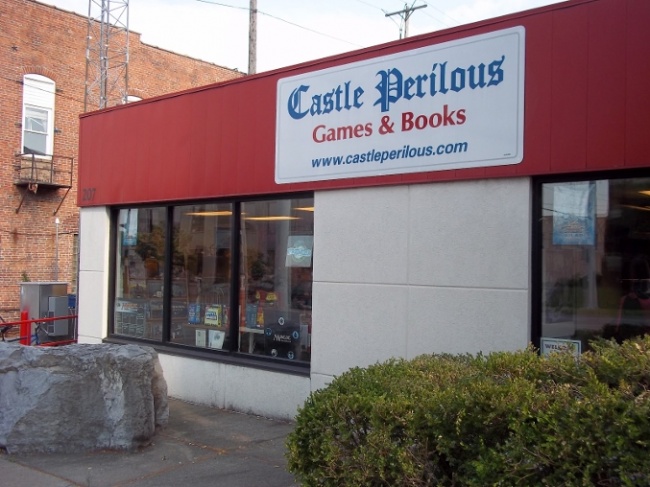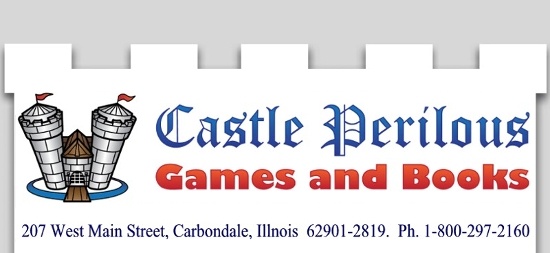Castle Perilous Books and Games opened 25 years ago this month, actually on St. Valentine’s Day. Why I chose to open on February 14, I have no idea all these years later, except maybe since it was St. Valentine’s Day, we wouldn't see much traffic, giving us a chance to shake out the bugs without bothering customers the first day. We operated out of a 2nd floor suite with no elevator and about 500 square feet of retail space. What can I say, rent was cheap and we were right across the street from SIUC and we did well. Today, the store occupies 6000 square feet 8 blocks from campus with about 10,000 cars passing us per day and our sales flabbergast me compared to what I considered a great day back then. Oh how times have changed and this seems a good time to look back at 4 trends that shape the game industry today (there are certainly more, but four is a nice round number):
- The shift of RPGs from print to PDF--As I have mentioned in previous columns, we started off dealing RPGs and miniatures. While there were many companies dealing in RPGs (see Shannon Applecline's Designers and Dragons for an overview), TSR and AD&D dominated the field and with no crowdfunding, no desktop publishing and no PDFs, a company had to have a lot of faith in their product to launch one. In most game stores, the RPG section dominated, unless their focus was historics, either miniatures or boardgames. Today, due to the aforementioned crowdfunding, desktop publishing and PDFs, the overwhelming majority of RPGs reside on computers or the Internet, with most stores only stocking Dungeons & Dragons and Pathfinder with maybe a few local favorites.
- The shift of historics from stores to mailorder--When we opened, every game store worth its salt had an Osprey book spinner rack and likely also a selection of historic miniatures, as well as some shelf space devoted to Avalon Hill, Victory Games and SPI wargames. Today, Osprey racks are scarce as hen’s teeth, historic boardgames are limited to Memoir '44 and Axis and Allies and, should you find historic miniatures in a store, they likely consist of Flames of War, Sails of War and Wings of War. Most historic boardgames and miniatures sell at wargaming conventions or over the Internet.
- The rise of the trading card game--Ah yes, Magic the Gathering and all of its offspring. When the Alpha set of Magic released, my distributor could not explain the concept to me so we bought one deck and two boosters, which sat on the shelf until players came back raving about this new game they found at Gen Con. The industry adopted the TCG and never looked back, with, I would estimate, 95% of all game stores stocking at least some Magic, if no other TCG.
- The (concurrent) rise of the boardgame--As I noted earlier, most game stores, when we started, focused on RPGS. If they carried boardgames, they stocked historic ones. No longer, the last years have seen the rise of the Eurogame, led by Mayfair Games and Settlers of Catan (now just Catan). While playing boardgames in the US still does not have the cachet of those produced in Europe, witness the number of boardgames imported from Europe each year. The sales and importance of them supplanted the RPG in the product mix of most existing stores and fit as a major component of the business plan of most new game stores (that don’t focus on TCGs).
More changes coming. Yeah, I would bet so. What they are, not a clue.
The opinions expressed in this column are solely those of the writer, and do not necessarily reflect the views of the editorial staff of ICv2.com.




